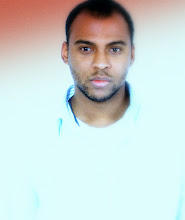Reuters - Cinematographers use tech to bring visions to life
This article was sent to you from bombastic4000@yahoo.com, who uses Reuters Mobile Site to get news and information on the go. To access Reuters on your mobile phone, go to:
http://mobile.reuters.com
Cinematographers use tech to bring visions to life
Wednesday, Feb 18, 2009 3:36PM UTC
By Carolyn Giardina
LOS ANGELES (Hollywood Reporter) - Anthony Dod Mantle remembers racing through the slums of Mumbai, desperately trying to keep up with the 7-year-olds who ran ahead of him.
There they were, "armed with life's energy and a world of hope and wonder; and me, overladen with 14 kilos of state-of-the-art equipment and a normal dose of middle age! What more can I say, except that I lost 11 kilos," quips the "Slumdog Millionaire" cinematographer.
Like his fellow Oscar nominees, he had to juggle high-tech equipment with the realities of capturing performances in a sometimes hostile environment. To record the energy of the densely populated streets of India, Mantle chose to shoot with a combination of 35mm and lightweight SI-2K digital cameras. The digital camera helped him to move quickly and discreetly through the slums, and to shoot while running alongside the child actors, getting him into the action without being obtrusive. It's a camera he never could have turned to a few years ago.
"The tools we use in the industry are developing and being re-evaluated all the time," he says. "This is how it should be." Keeping up with them, he says, is "one of my main responsibilities as a cinematographer."
SIZE MATTERS
Taking advantage of the latest technology, "The Dark Knight" is the first narrative studio feature to be lensed, in part, using Imax film cameras.
Wally Pfister, director Christopher Nolan's longtime collaborator, lensed six key action sequences of "The Dark Knight" with 65mm Imax film cameras and the rest of the film in anamorphic 35mm. His goal was to create the epic imagery of Gotham, from breathtaking aerials to high-octane chase sequences, in the highest possible resolution. The Imax sequences included the bank heist that opens the film and the chase through the Chicago streets during which the filmmakers literally flipped an 18-wheel truck.
Pfister was unwilling to compromise on camera movement and setups with the heavy 100-pound Imax camera, so he hung the camera off a car, helicopter and an 18-wheeler.
Claudio Miranda, a longtime collaborator of director David Fincher, lensed "The Curious Case of Benjamin Button" primarily with a Grass Valley Viper digital cinematography camera, which he had used on a number of the director's award-winning television commercials. For portions of the film, he also used a Sony digital cinematography camera and film. Film, for instance, was used in the sequence when Benjamin and Daisy take a trip to the Caribbean.
The use of the Viper has a lot to do with the way Fincher works. With the digital camera, Miranda is able to roll for a longer period of time, without having to pause to reload -- something Fincher likes when working with his actors.
Miranda's creative objective was to give a natural look to each period as the story follows the title character through the decades. "In the early years, the lighting is a lot warmer, with gas lamps and tungsten light," he says, adding that the lighting grows cooler and clearer as it approaches the present decade.
PERFORMANCE TAKE PRECEDENCE
If "Button" combined cutting-edge technology with top-rate performances, Clint Eastwood's "Changeling" simply was about the actors.
"Clint's priorities come from the acting side," says director of photography Tom Stern, who lensed "Changeling" in anamorphic 35mm. "It's about (framing lead actress) Angelina Jolie in the appropriate '20s environment that didn't distract from her work."
This doesn't mean Stern wasn't concerned with the images he created. "I always try to involve the audience's imagination," he notes. "Things aren't always fully lit. Sometimes Angelina will play in and out of light. Clint likes black. That gives a realistic atmosphere. It's more or less as you might perceive something in a real situation."
Capturing performance also was critical to "The Reader," shot partly by Roger Deakins and partly by his friend Chris Menges.
"We like to improvise, and we like to work with the actors and director and live in the moment," Menges says. "We tried to make the photography very natural, very simple, to catch the performance. Roger and I both have big respect for performance."
Menges replaced Deakins when "The Reader," lensed in 35mm 3-perf, had to take a hiatus in the middle of filming: Nicole Kidman had dropped out because of a pregnancy, and the crew had to wait until Kate Winslet came onboard. Deakins was unable to complete the film because of a commitment to shoot "Doubt."
Regardless of credit or methodology, "everyone involved was fighting to make something important of the screenplay," Menges says. "'The Reader' is a story, not of redemption or forgiveness, but of how the subsequent generation comes to terms with what happened during the Third Reich ... Roger and I tried to create something very believable."
(Editing by Sheri Linden at Reuters)


No comments:
Post a Comment